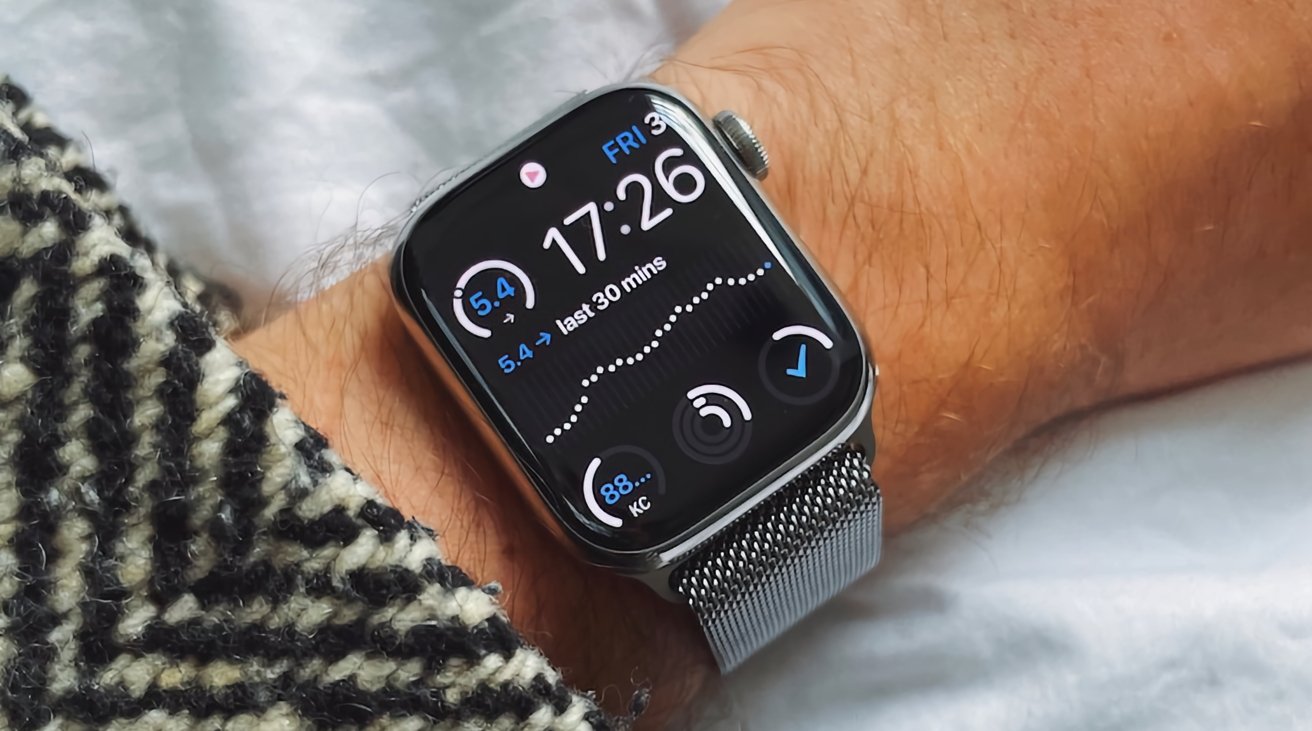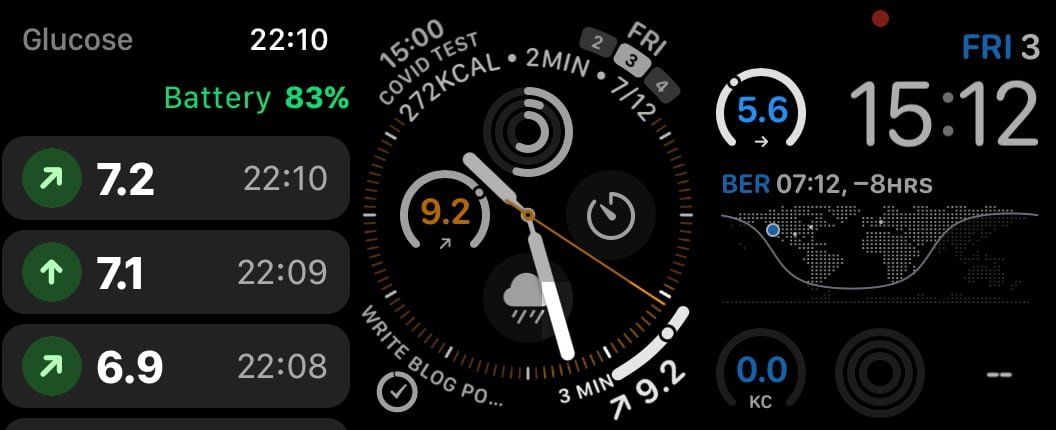Homebrew project adds continuous glucose monitoring to the Apple Watch
An Apple Watch owner has created a complication and watchOS app that works with a glucose monitor, so they can keep track of their blood glucose level from their wrist.

Numerous rumors have claimed Apple is actively working on some form of glucose monitoring sensor for the Apple Watch, but has so far yet to add it to the wearable device. In the case of one Apple Watch owner, they managed to hack together their own solution.
The project, outlined by Harley Turan, effectively takes the data from a continuous glucose monitoring system and imports and interprets it in a way that it can be viewed on an Apple Watch. In doing so, the project creates a reasonably low-cost solution for the problem.
The base of the project is the Abbot FreeStyle Libre, a coin-sized sensor attached to a person's arm to measure glucose levels in a subcutaneous fat layer. The test is performed whenever a pocket NFC reader or smartphone is presented, giving a good amount of data, but it's not quite as useful as a continuous glucose monitor.
CGM systems cost in the region of 1,900 pounds ($2,372) per year to operate in the UK, and currently aren't ideal. As well as being expensive and proprietary, Turan says the firms who make them "are limited by regulators as to what they can do," while apps can be "buggy" with poor visualizations.
To try and work around the problem, the project uses the Libre sensor, which is free on the NHS or 57 pounds ($71.18) when bought privately and lasts for two weeks. It is combined with a small Bluetooth/NFC device to automatically trigger the Libre sensor, effectively turning it into a continuous glucose monitor.
That data can then be collected by a specially-created watchOS app that connects over Bluetooth. The watchOS app monitors the data via a regular background request, and triggers notifications to the user if there are rapid glucose changes.

Examples of watchOS app screens and complications from the project.
To see the data on the Apple Watch, Complications were created for use in watch faces. This included a circular gauge with a dot along with a text-based reading and a trending indicator, as well as a "graphic corner gauge text" for the Chronograph watch face.
Turan admits that more work could be done to make the watchOS app more fully featured, and to create other complications such as one for the Bluetooth transmitter's battery and a counter for replacing the Libre sensor.
While the project provides a way to create an Apple Watch-compatible continuous glucose monitoring system for a reasonable cost, it isn't a route that most diabetics will take. However, it does demonstrate that such a system could be built from scratch.
More consumer-friendly systems offering similar features are on the way, such as the Dexcom G7. Smaller than previous models, the G7 is a compact match-style sensor that is capable of sending data to an Apple Watch and an iPhone.
After securing a CE Mark in Europe in March, Dexcom may start rolling out the G7 across the continent later in 2022.
Read on AppleInsider

Numerous rumors have claimed Apple is actively working on some form of glucose monitoring sensor for the Apple Watch, but has so far yet to add it to the wearable device. In the case of one Apple Watch owner, they managed to hack together their own solution.
The project, outlined by Harley Turan, effectively takes the data from a continuous glucose monitoring system and imports and interprets it in a way that it can be viewed on an Apple Watch. In doing so, the project creates a reasonably low-cost solution for the problem.
The base of the project is the Abbot FreeStyle Libre, a coin-sized sensor attached to a person's arm to measure glucose levels in a subcutaneous fat layer. The test is performed whenever a pocket NFC reader or smartphone is presented, giving a good amount of data, but it's not quite as useful as a continuous glucose monitor.
CGM systems cost in the region of 1,900 pounds ($2,372) per year to operate in the UK, and currently aren't ideal. As well as being expensive and proprietary, Turan says the firms who make them "are limited by regulators as to what they can do," while apps can be "buggy" with poor visualizations.
To try and work around the problem, the project uses the Libre sensor, which is free on the NHS or 57 pounds ($71.18) when bought privately and lasts for two weeks. It is combined with a small Bluetooth/NFC device to automatically trigger the Libre sensor, effectively turning it into a continuous glucose monitor.
That data can then be collected by a specially-created watchOS app that connects over Bluetooth. The watchOS app monitors the data via a regular background request, and triggers notifications to the user if there are rapid glucose changes.

Examples of watchOS app screens and complications from the project.
To see the data on the Apple Watch, Complications were created for use in watch faces. This included a circular gauge with a dot along with a text-based reading and a trending indicator, as well as a "graphic corner gauge text" for the Chronograph watch face.
Turan admits that more work could be done to make the watchOS app more fully featured, and to create other complications such as one for the Bluetooth transmitter's battery and a counter for replacing the Libre sensor.
While the project provides a way to create an Apple Watch-compatible continuous glucose monitoring system for a reasonable cost, it isn't a route that most diabetics will take. However, it does demonstrate that such a system could be built from scratch.
More consumer-friendly systems offering similar features are on the way, such as the Dexcom G7. Smaller than previous models, the G7 is a compact match-style sensor that is capable of sending data to an Apple Watch and an iPhone.
After securing a CE Mark in Europe in March, Dexcom may start rolling out the G7 across the continent later in 2022.
Read on AppleInsider

Comments
It works well with various watch faces
I have personally used both systems and prefer the G6.
Hopefully, there will be improvements to GCMS size, robustness and longevity going forward.